 Mar
02
Mar
02
The End of Everything: Looking back on the Clark Foam Legacy 12 Years Later
- March 2, 2017
- 1 Comment(s)
In 2005 Robert Kelly Slater won his seventh ASP World Title,
famously to the ire of runner-up and long-term adversary, Andy Irons. In 2005
Ben Stiller made an unexpected cameo appearance in the Taj Burrow classic Fair Bits!, alongside the likes of
super-talents such as the Malloy brothers and Rob Machado. In 2005 the ever-fickle Mundaka event was cancelled when the
waves, in a less than shocking manner, failed to arrive. On December 5th,
2005, Clark Foam unexpectedly closed its factory doors forever.
It’s been
just over a decade since the surfing industry was thrown for a loop when it’s
largest supplier of surfboard blanks called it quits, leaving thousands of board
builders, industry insiders, and surfers scrambling for emergency solutions.
Speculation over the cause of this sudden closure and what it would mean for
surfing in general flew rampant (with varying degrees of truth and accuracy),
and people were justifiably scared and confused. In the time since, much has
been said and written about this incident, and of course the sport and industry
has recovered, and in fact even grown, as a result.
Yes, by now
almost everything that could be said about this occurrence has been. Our
intention is not to provide you a play-by-play history of the final days of
Clark Foam. Even the most cursory Internet search will provide you with that
information. The fact of the matter is that Clark Foam was both directly and
indirectly a part of many peoples lives and livelihoods, and often time the
true nature of any event lies in those more personal experiences. For the former
employees and distributors of Clark Foam, this is truer than for most. Though
Clark is no longer around, it’s legacy and standard for quality have shaped
what the surfboard industry has become.
– Joey Estrada
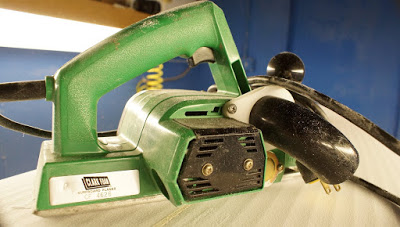 |
| Planer with Clark Foam Badge |
what was your job at Clark Foam, and what did that entail?
– Matt Barker, Product Creation Operations Director, Hurley: My contribution to Clark
Foam started February 1981 and lasted thru September 2005. That equals +50% of my life at the time, and
over 50% of Clark Foam’s existence.
My #1 Job at Clark Foam was to
obsess on the current and future business, design, and material performance
needs of our customers (shapers), and serve their evolving needs with innovative
product offerings, quality product & services, through a collaborative
partnership. In other words, the shapers directed our business. I was just the
eyes and ears (and very lucky to have this vital role).
– Tami Mays, Teacher: I worked for Clark Foam in the
middle office accounting department from 1996-2003. I helped with customer
service, order entry, accounts payable, accounts receivable, payroll, and other
misc. office tasks.
– Matt
Stevens: Executive VP and front office grunt! Ha! I was
responsible for delivering a quality product to the manufacturing floor, which
in turn delivered a quality product to our customers. That entailed a little
bit of everything from getting the hands dirty with blanks, to working in some
complex systems and developing repeatable processes. To put it in context, this
was one of the most highly customized manufacturing facilities to be found. I’m not
talking about robotics or cleanroom high technology, but you’d be hard pressed
to find a more finely tuned batch process capable of the same range of
customizable options and quality. My
job, as it turned out, was really just to make sure our customers were
successful. You wouldn’t believe how much energy went into making sure that when
a shaper was ready to shape, they could work efficiently with the right blanks.
That sounds pretty vague, but that was essentially my job.
– Craig Larsen, Technical Sales at Composites One: I worked in
the Front Office at Clark Foam, at first with Dick Morales and Matthew
Barker. At that time the focus was on
working with customers, both local and foreign on orders, rockers, stocking
needs, and credit. Basically inside sales.
After Dick passed away, we
were going through a lot of operational restructuring. Gordon, with the
leadership of Kim Thress, was moving the plant into a “lean” operation. He
restructured the Front Office to also take care of the inventory management,
including the Hawaii and Florida warehouses, production “batch” planning and
figuring out the truck routes. We were also busy working on new, efficient ways
to increase production and accuracy (double checks) of everything we did at
Clark Foam. We also helped deliver trucks. Lots of working on procedures and
processes. Anyone that has worked for
Gordon knows his passion for process manuals.
relationship with Clark Foam and how did you become one of their distributors?
– Brad Nadell, Owner of Foam E-Z: I had a close relationship with the drivers and the
girls in the office. The relationships
developed from years of talking on the phone and in person as our business grew
over time. Becoming a Clark Foam
Supplier spawned from us simply reselling the blanks to local shapers. As time went on and we grew our reach to
different board builders around the world, the numbers of blanks grew too. Resulting in us becoming one of Clark’s top
resellers in the world.
Clark was obviously hugely
influential for the industry, both during its operation and after closed. What,
in your opinion, accounts for this influence that set Clark apart?
– Matt Barker: At Clark
Foam- we always put the shapers (and end users) at the center of our business
decisions. Besides that, Gordon Clark is
the smartest person to ever serve shapers (and surfing). No one “pays attention” more that Gordon
Clark.
– Tami Mays: Gordon’s
niche was unprecedented. His corner on the market came from years of R&D to
perfect his product.
– Matt Stevens: Nobody else could figure out how to do it
better, or with nearly the same level of service. Clark Foam was so far beyond what anyone else
could put out in quality or quantity. It didn’t leave much room for other
disruptive technologies or competition to emerge as a serious player. Beyond
product, the service model was pretty advanced. Just think of this in Foam E-Z
terms…whether you were out on an island looking for a tow-in board or an
established board builder down the street trying to make a customer happy with
a reverse rocker log, you could easily order up a blank with very specific
bells and whistles and have it dropped at your doorstep in a matter of days,
not weeks. For the commodity blanks that needed to always be available in Foam
E-Z’s racks, we borrowed some smart ideas from others to make availability and
replenishment really easy to achieve. I’m
not sure if I answered what made Clark influential as much as what made it so
dominant and in control of their place in this little niche industry.
– Craig Larsen: Clark
Foam was very supportive of the entire market, especially the small builders,
which was a huge influence on the overall market. It used to drive the bigger builders crazy,
but he was extremely supportive to the small builder because he knew from
history that most of the innovation in surfboard design would come from the
smaller shops because it was easier for the smaller builders to react to market
needs.
But the thing that really set Clark Foam apart
in my opinion is the overall efficiency of the operation. That place was a
well-oiled machine, every process thought out and documented. This efficiency
led to a high level of service to the market. Sometimes it meant that we
couldn’t bend for someone who needed a rush order, but with Gordon, the more
efficient we were, the better service customers were receiving. Gordon is
extremely efficiency minded.
you involved with Clark and their employees/operations?
– Brad Nadell: I became good friends with some of the drivers
that delivered the blanks. Most of these
friendships still exist to this day. As
far as operations go, I wasn’t super involved.
The main interaction regarding operations was for Clark to understand
our business model and for us to understand how things operate down there. From that mutual understanding we together
with Clark developed the method of keeping a consistent stock of blanks at Foam
E-Z amid the high the demand that was put on us.
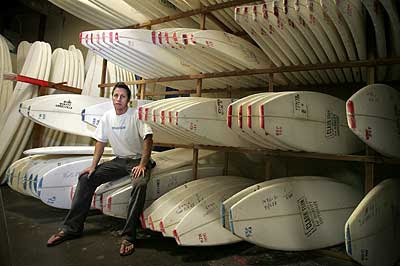 |
| Brad Nadell surrounded by Clark blanks in the Foam E-Z warehouse |
other competition with other blank manufacturers?
– Craig Larsen: Walker
Foam and occasionally some various Australian blanks. Really mainly the shaping
machines. He used to say that KKL was Al Merrick’s blank supplier, not Clark
Foam. To be honest, not a lot of
competition. Back in the 60’s and 70’s there was a lot of competition, but most
the companies crashed and burned over credit wars. I’ve heard all the crazy stories of all the
evil things that we did at Clark Foam, but while I worked at Clark Foam those
stories were BS. There was a time in the late 90’s that we were definitely
oversold and we had to put the market on allocation and make some hard
decisions. Pretty stressful time. With that said, I would have hated to compete
against Clark Foam, it was such an efficient machine and Gordon really
understood how to add value beyond making a blank. There were a lot of value
adds that customers really didn’t think about until after Clark Foam shut down.
He made things very convenient for customers. Beyond the 70+ different blanks
in 5+ different weights with an extensive custom rocker program, we had the
keys to just about every shop in California so we could deliver blanks without
customers being around. Also the credit
side of things was huge, we would work with just about anybody as long as you
were actually a builder. Because we
didn’t have a lot of competition, our customers were a lot more accountable to
paying Clark Foam in a timely manner. I’m sure after Clark Foam shut down, the
credit side of things got ugly for all the new blank builders.
– Matt Barker: Off and on there was competition- but our level
of service, broad product offerings, and deep relationship with our customers
were a very effective entry barrier for others just showing up on the
scene. Additional our highly efficient
systems and processes allowed us to keep prices very competitive. We basically kept competition to a minimum by
doing our job really well.
– Tami Mays: I wasn’t aware of any.
– Matt Stevens: No, not really. There was always something
getting hyped up, some new blanks or “new” board building technology, but it
was usually just hype or a recycling of something that had been tried before.
As I recall, the Australian and Brazilian foam markets were well served by
themselves. I’m not sure if there was ever the manufacturing capacity to
support a market outside of their own anyway. Whether it was good foam or junk foam
was always up for debate and depended who you talked to, but it did show up
here or there sometimes. On a global basis, we shipped containers regularly to
Europe, Japan, South America, and on occasion to other places we as surfers
want to be (Central America, South Pacific, etc.). Never can I remember one
shipping to Australia.
We probably created competition elsewhere by shipping
abroad, but only once in a while would a supply of Aussie Burford or Bennett
blanks would show up somewhere and a container would get sprinkled around a
local market. Same thing with the occasional domestic Walker Foam delivery
you’d run across in someone’s factory. We didn’t see or know of much else with
any regularity. New stuff would usually end up as shaping machine back room
inventory when hand shapers got tired of trying to work too hard for a quality
shape. Most shapers were all-in, but there were definitely those who were a
none-at-all thing with Clark Foam, not much middle ground. So, yes, there was
always some other foam to be found here and there, but nothing consistently or
in steady supply. There was always someone pushing something new, ‘whiter or
lighter’, but with very rare exception did that mean it was even close, let
alone better. I’m rambling here, but I
could go on a bit on this topic…some fun stories of game changing alternatives
to the PU blank, long standing feuds, egos, and myths of strong armed business
tactics!
competition ever, at that time, from other blank companies who wanted you to
sell their blanks?
– Brad Nadell: Before December 2005 (Blank Monday) there was really
no competition. Walker Foam was out
there but I didn’t have the need to carry their blanks as Clark was servicing
our needs extremely well. That’s one of
the strategies they used to insulate themselves against the competition. From time to time Walker would hit us up to
sell their blanks but nothing materialized until after Clark Foam was gone.
visit their factory, what was it like?
– Brad Nadell: I visited the factory about once every other
month. Sometimes it was to check out
operations other times it was simply to grab lunch with one of the guys. The factory was really amazing to me. Never before had a seen a factory where
something was manufactured from start to finish. Clark had everything in raw material form
from the chemicals to the wood. He had
his own wood shop, tool repair shop, foam pouring shop, stringer cutting shop,
gluing room, staging area, shipping area, and so on. It was like a full blown city on a small plot
of land set in Laguna Niguel.
operation at your time there?
– Tami Mays: I’m not sure the exact number of how many blanks we
shipped, but we did have over a hundred employees at the factory.
– Matt Stevens: 100 employees. The glue shop could finish
slightly more than the foam shop could produce on a daily basis. There was a
new batch of a couple thousand blanks being blown, glued, and shipped
approximately every two days. Pretty sure it was approximately 960 vs 980 per
day, but could be wrong. In each batch, we’d have a minimum of one, oftentimes
two, shipping containers and local orders for delivery. I don’t recall how many
blanks in inventory at the factory we could hold at capacity, but under periods
of high demand, the inventory of uncut raw blanks could be depleted pretty
quickly as the short term supply answer was to throttle up the glue shop and
get blank orders out the door. The foam shop had more of a capped production
capacity. The skilled foam shop workers were the longest tenured guys, and
could run 24/7. The glue shop guys could get trained up and cross trained
quickly at any number of positions and were able to run 5am to 10PM for
everyday stretches with some creative scheduling.
The constant balance of
manpower and material resources was something else! Gordon introduced the
‘cubeta’ (Spanish for bucket) which was an employee profit sharing program
based on a complex ratio of maximizing production while minimizing
manufacturing resources. I never fully broke down the complexities behind it,
but we all knew when we were working flat out for periods and it was kind of
fun to watch the money in the cubeta grow. It was a pretty unifying tool for
the troops, encouraging all 100 employees to be on the same page with production
goals. We also had medical benefits and vacation accrual too. It was a pretty
good size operation and it was fun to be a part of such a unique small to
medium size business.
– Matt Barker: We
strived to scale our production output to sufficiently service all our
customer’s needs in a timely manner. We
had a pretty good track record of consistently taking care of our customers.
– Craig Larsen: Probably
110 employees. During the late 90’s we had the foam shop going 7 days a week 24
hours a day with very little overtime. This was a huge feat.
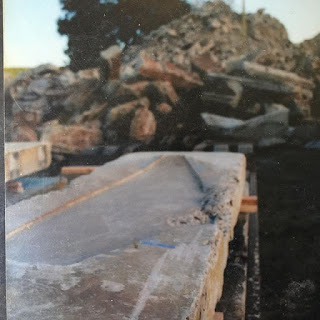 How did you first
How did you firstfind out Clark’s factory doors were closing for good, what was your reaction?
– Matt Stevens: While everyone received the
public facing notice of closure at the same time, there were some troubling
signs coming up to that day. Matthew Barker had already moved on to work for
Hurley (Matthew is an awesomely talented guy, and his career change timing was
impeccable). Kim Thress had left Clark Foam a couple months prior. (Most
everyone in-the-know of surfboard manufacturing knows Kim, knows of Kim, or
should know that Kim has put more heart and soul into supporting the board building
industry than almost anyone alive). Reed had recently retired after
several decades of working for Gordon. And, even ‘Chuey’ had
retired and left for Mexico. A full century of blank building knowledge and
expertise right there had already left the building! The place was still in
very capable hands though, including Gordon and Nikki’s very bright and
recently graduated daughter Sarah. Gordon was under some real pressures, maybe
not what the famous letter of closure to customers indicated, but not far from
the truth either.
Anyway, fast forwarding to the
morning the whole thing ended, Gordon and Nikki showed up to the office mid-morning
and for some reason I distinctly remember being on the phone with Pat Rawson
and thinking to myself, this ain’t good. They walked in both visibly upset and
called a meeting back in the maintenance room. I remember the walk back there
thinking we would hear something awful like a malignant cancer diagnosis. From
memory, it was me, Joel, Patty, Jeff Holtby, Sergio and Luis.
Among other things, we were basically told that we just poured our last blank
and we would be closing for good. The explanation we got didn’t allow for many
questions.
My reaction? I was stunned
obviously. I had a wife and a brand new mortgage and no advanced notice. There
were a lot of people, a huge community of board builders and Clark employees
alike, worrying about providing for their own families too among other stresses
when people find out suddenly that they have to stop making a living for a
while. For a while, I carried around some guilt for letting down so many board
builders that became good friends. Gordon gave everyone the option of staying
on for a few weeks while the factory was gutted and either destroyed or
auctioned off. Pretty stressful time, and I wasn’t very fond of being on the
front lines of damage control with people looking for answers. I came to the
conclusion that I, like our customers and every other employee, was just a
casualty of a bad situation and so I decided to cut out after just a couple of
days. It was a dark time, but I hope that everyone came out of the adversity a
little better than they were before.
– Craig Larsen: I had moved to Utah by then. My phone started
ringing off the hook. Even had a couple people show up at my house in Utah
asking questions about key Clark personnel.
– Matt Barker: I received a phone call from a Clark Foam
associate at the very moment it happened (I was actually standing in a tee
shirt warehouse working on process improvements for Hurley). My reaction was
three fold; concern for my longtime shaper friends (losing a vital business
partner), and for the many dedicated employees at Clark Foam (losing their
ability to provide for their families), and for Gordon having to fold up his
life’s work. It was a very tough day for
everyone. But like most things, it all
ends up working out over time.
– Tami Mays: I had left Clark
Foam a few years before and, just like everyone else, was shocked when I heard
the news of Gordon’s decision. I heard from a friend and I suppose I was
relieved that I had moved on before it all went down.
How much forewarning did you have regarding
Clark’s closure?
– Brad Nadell: ZERO… I
was working at my home office when “The Fax” came through. My only
employee at the time called me and said something weird was going on. As faxes go… this one especially was
extremely hard to read as it had a white stripe going through it
vertically. Even though the fax was
difficult to read we got the picture real quick.
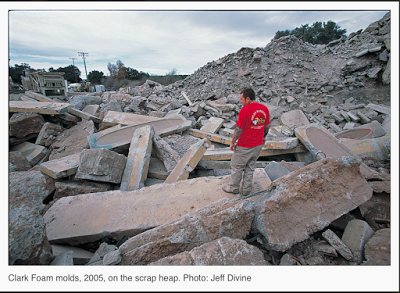 |
| Destroyed Clark Molds |
certain extent, Clark Foam was the surfboard-building life-blood for quite a
while. Do you think there was a feeling of betrayal or unfairness at all after
the doors were locked and the molds were destroyed?
– Matt Stevens: A feeling of betrayal is a
good way of characterizing what a lot of people felt. I understand some of the
reasoning behind it, but it probably could have been executed a little
differently. Everyone has an opinion on this, how they would have done it. But
in the end, sound reason and good judgment don’t always drive the outcome.
Tami Mays: I’m sure that Clark Foam’s customers were left feeling
cut off at the knees when Gordon decided to close. It’s unfortunate that it
created such a panic and that it ended for many with a sense of betrayal. I’m
hoping as the years have gone by that other manufacturers have filled the hole
in the blank supply that Clark Foam left.
Matt Barker: I
cannot speak on behalf of Clark or Clark Foam- but here are my two cents. Of
course there are some people that would like betrayal to be the narrative- but
that is mainly coming from those not close to the events and communication that
unfolded.
For the record, every shaper’s
plugs (that new molds that subsequent molds are built from) where returned to
the shaper/designer by Clark Foam for use with their future blank supplier (and
to benefit the broader industry). The
molds themselves were destroyed as well as some unique equipment because this
equipment was designed and built on site at Clark Foam, and would have carried
a tremendous safety liability in the hands of others.
Additionally Clark Foam worked
closely with its long-term customers to get them what they needed (Blanks) from
the remaining inventory (which was very extensive). I will leave the “why it happened” to Clark’s
official announcement to his customers at the time.
– Craig Larsen: Gordon
understood the history of the surfboard market better than anyone. He is one of
the smartest people I’ve ever met. Every time I ever second-guessed Gordon, 6
months or a year later I would be proven wrong. Every time. So I’m not going to
second guess him on how he shut Clark Foam down. He was always concerned about
what was best for the surfboard builder and the overall market big picture. My
theory (although probably wrong) is he shut the plant down suddenly, destroying
the molds, because he knew this was fastest and best way for the market right
itself. What would the affect been to
the market if he handled the closing differently? Better? Maybe for some, but
maybe not for a lot of builders. Hard to say, but I’m not going to second guess
him.
was it like for you, as a distributor, in the days and weeks following their
closure?
– Brad Nadell: Extremely
scary! Basically didn’t know what the
future would hold. It was like there was
not going to be any more milk available or toilet paper or really anything that
we all depend on to survive. I had to
pull my roll up door down and lock the doors.
The phone was ringing off the hook and I swear we had like 200 messages
in one day. I didn’t open the shop again
for four or five days. Needed to sort
out the situation and try to make the best decision for all involved.
other blank manufacturers step up to fill the void immediately, or was there a
vacuum of blank availability for a while?
– Brad Nadell: Well
luckily for us Clark offered us a large number of their back stocked
blanks. Which we allocated this last
gasp of Clark Foam Blanks to our customers in a very methodical way, as to try
to take care of the shapers that took care of us over the previous twelve
years.
After these Clark Blanks were
gone (about two weeks), we started trying to figure out our next step. I was meeting with blank manufacturers from
all around the world. They all flew over
here after Clark closed and were trying to suck up the business. Some of my competitors decided to bring in
containers of blanks from around the world but we didn’t. I reached out directly to Walker Foam and
began a relationship with them. Luckily
for me Gary Linden was doing their customer relations at that time and we had a
previous relationship as we had provided him blanks and tools from time to
time.
The other key ingredient to
this relationship was our proximity to Walker Foams factory. Huge props to Walker Foam for supplying us blanks
during a tumultuous time and helping us bridge the gap from Clark Foam to where
we are today. Unfortunately for Walker
Foam, the over expansion to meet the demands of the market ultimately was their
demise.
Clark’s final days. Do you have a plan to ever shape those or will you hold
onto them as a collector?
– Brad Nadell: I gave a few of the blank to some of our employees to
shape up. We need to check in and see
what they thought. I am keeping one or
two in my rafters as a little memory of the Clark Days.
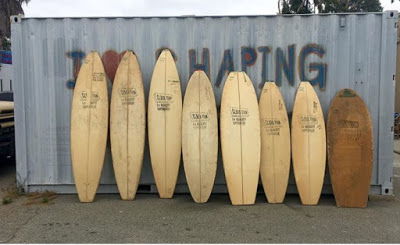 |
| The Foam E-Z Clark Blank Collection |
did you move onto after working at Clark Foam?
– Craig Larsen: Gordon
always used to tell us that Clark Foam was a great place to learn, but if you
wanted to make a decent living you better go work somewhere else. It was the
surf industry for god’s sake. So in 2000 I decided to take his advice and try
to make a better living. He was right about learning a lot. I use knowledge I
learned at Clark Foam every day in my job now.
I left Clark Foam in 2000,
first to Revchem doing technical sales. In 2002 I moved to Park City Utah to do
technical sales for Composites One covering Utah and Colorado. I have customers
that make everything from bowling balls to rocket ships, snowboards to rocket launchers.
I miss the ocean, but not all the hordes of surfers. Surfing sure got popular in the 90’s.
Matt Barker: I had previously left Clark Foam for Hurley about 4
months prior to its closing. I’ve
been with Hurley for nearly 11 years. While at Hurley I have managed customer service
& compliance, distribution operations, directed operations in our printables
department, launched our sustainable business & innovation efforts (as well
as helped shape and launch Hurley’s Born
From Water– H20 initiative), led our Apparel Production Team, worked on
wetsuit performance development, special surf projects, and currently our
product creation operation. Each of these roles/contribution to Hurley were
direct results of the deep experiences learned at Clark Foam. Hurley is a
fantastic place to work (and was started by a shaper Bob Hurley).
The reason for leaving Clark
Foam was the feeling that Clark Foam, like industries, were no longer going to be viably
operating in much of Southern California due to the ever tightening regulatory
requirements and unfriendly business environment. So I realized that my family’s future
provision needed a better long-term solution. I then found a new career away
from plastics manufacturing. It was the
hardest decision I’ve ever made. I loved my work at Clark Foam, and I
especially loved (and now miss) all of the great lifelong surfboard building
friends locally and around the world, as well as my Clark Foam Family. The good news is virtually all of the intellectual
strengths of Clark Foam came back together in the form of U.S. Blanks.
Tami Mays: The last few years I
worked at Clark Foam I was taking classes to obtain my teaching credential. I
quit when I was ready to student teach. I’ve now been teaching for 13 years.
– Matt Stevens: Baja for a while, Ha! As life goes, my next
chapters have been better for me and my family. I had a friend who encouraged
me to get out of my comfort zone and get my act together a little bit for a
more corpo gig. Maybe a little bit more money, but not nearly as fun as the
good old days.
has the industry changed since Clark closed its doors, from your perspective as
a business owner? Is there a greater diversity or access to blanks?
– Brad Nadell: It is a
completely different world now. Many
different options as far as EPS and other foam manufacturers go. The biggest difference for us is the fact
that pretty almost all professional shapers use a shaping machine. These cutting houses usually stock the blanks
now and therefore cutting us out of the mix.
At one time you either had to get your blanks from Clark Foam directly,
or from us or one of the other local blank suppliers. We now service the home-builder more so than
the pro-shaper, but still have our loyal clientele from the old days. Whenever a pro-shaper needs a blank for a
hand shape or any tools they still either stop by or call the shop. A small number of pro-shapers who do not get
their blanks cut buy their blanks from us
have you noticed in the board building world in the last 12 years?
– Brad Nadell: The biggest one is a big shift away
from hand shaping. Also more unique
shapes are being tested and surfed on a regular basis. Definitely people are building boards on the
thicker, wider, rounder easier-to-catch-waves spectrum. Since surfing is more mainstream now
entry-level boards cover a broad range.
Fishes, Mini-Simmons, stubbies… basically anything with volume seems to
be hip.
favorite memory from working in the Clark factory or with Gordon Clark?
– Tami Mays: With such a small office staff, we really did feel
like an extended family most of the time. I will always remember celebrating
co-workers’ birthdays with cake! The relaxed and casual environment was
comfortable and friendly, but it really was all business with many routines and
procedures in place to make it run smoothly. Gordon was a big proponent of
always learning more. He would go out of his way to help people acquire the
skills needed to keep our factory on track.
– Matt Stevens: On the factory side, it was the scream of
the stringer router, the faint smell of styrene, the pumping mexi music, and
the good people I worked with.
the factory, I had the privilege of peeking in on literally hundreds of shaping
rooms and artists, soaking in as much as I could. I love surfboards and I love
interesting people, and a decade at Clark Foam provided plenty of both. Can you
imagine the thrill of Terry Martin saying, “Here, I’ll show you how…it’s just a
dance”? Walking into a pre-dawn Natural Curves factory, fog and reggae so thick
you could cut it with a knife, to meet Steve Coletta? Rich Harbour talking
story (ask him about seeking legal advice from Gordon back in the day)… These
guys were/are just legends! Wayne Rich shaping sessions… to a Rick Hammon quick
tutorial on turning a rail… to stints in Wahiawa… the cast of characters and
free shaping tips! Leading the herd was Gordon Clark, probably the smartest man
I’ve ever met. He was good to me, and I think many board builders would agree
he was good to them as well.
– Craig Larsen: Probably
my favorite memory of Gordon was while I was still a fairly new employee I was
in the same office doing work that Gordon and the fire department and county
fire officials were in having a meeting. The meeting started to get heated and
I remember Gordon looking at one of the officials and telling him “If this was
Texas and you tried to do this to a business you’d be hanging from that tree
outside this building.” Scared the shit
out of me.
– Matt Barker: My
favorite memory as a surfer was being asked by Gordon to “stay on the clock and
take Gerry Lopez surfing”. My first role at Clark Foam (when I was 21) was
helping Gordon build a new Foam Machine (I helped with wiring and
plumbing). One day the wind was
offshore, and there was a 6’ south swell and I was working on the Foam
Machine. Gordon called me from his home
and said, “Are you busy?”
I said, “Of course.”
Then he said, “I
need you to do something- don’t punch out, get your surfboard, drive to my
house and take Lopez surfing.” I grabbed Gerry and we went to Salt Creek. He had never ridden a thruster so we traded
boards (mine was a 5’10” Max McDonald Thruster made with experimental
“Ultralight” foam). So we traded boards
before paddling out. One of the older
guys at Creek that always treated me shitty like a grom and said to me, “Hey
you see who that is,” motioning towards Lopez.
I said, “Yeah I know. He’s here with me and
he’s riding my board.”
The guy yells “Bullshit!”
I go, “No really,” and lift
Gerry’s board that I was riding up out of the water. The look on his face was priceless. That is one of the countless special memories
while being a part of Clark Foam.
So yes, I once got paid to take Gerry Lopez surfing… who can say
that?

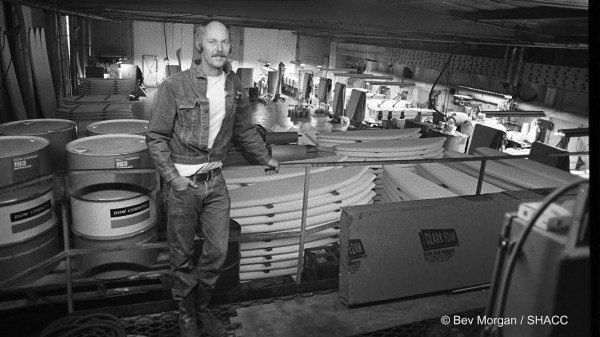
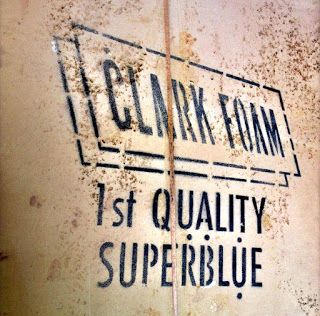
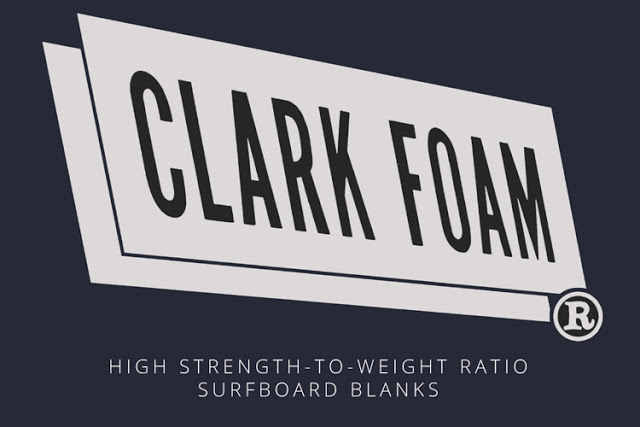
One comment on “The End of Everything: Looking back on the Clark Foam Legacy 12 Years Later”
I worked for Gordon Clark and the gang for 12-1/2 years – from 1983 to 1996. During my time there, I worked in the maintenance department, ran the Woodmill, and moved into the office to take over inventory scheduling for all of our warehouses. I developed a charting system that assisted us in making sure the right stock was in the right place – the Hawaii and Florida warehouses – at the right time. During my time running the woodmill, a drastic shortage of redwood came into play. I was tasked with coming up with an alternative; a hardwood that was stable, easy to shape, AND the right color. After working with the supplier for a long time, we finally settled on Western Red Cedar – it had the strength and stability necessary, and the color was pretty much right on. It also shaped easily. So, suffice it to say that Gordon Clark was always open to input and contributions from his employees. It's funny – as to Gordon notifying the factory he was shutting down his operation via FAX … well, imagine that. After 12-1/2 years, I was actually TERMINATED by fax. The letter brought me to tears, because it was devastating to me. I'd spent a whole lot of my life there, and I worked hard and learned a lot. When he let me go, I knew why; I was not a "Yes Man" and I argued my points. I also had nowhere to climb any higher than I already was in the company, due to long-term employees in positions above me. So, he did me a HUGE favor by sending me off to make my future somewhere else. I harbor no grudges against him – working at Clark Foam remains a great memory for me, and I feel I was a part of surfing history. I may not be well-known, but some of what I did made many, many surfers' lives more fulfilling – if only because they got their board when they wanted it – and with the right wood. Thanks, Gordon! You old bastard, you. 😉
Comments are closed.